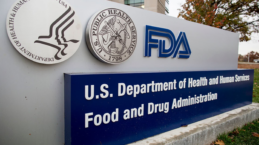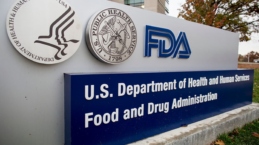

insights
Apple Watch Approval Marks Shift In Device Development And Approvals
In September, the U.S. Food and Drug Administration (FDA) approved the Apple Watch’s electrocardiogram feature, clearing the way for use of the watch as a medical device. This is the latest step in the FDA trying to quickly catch up with the evolution of technology available to consumers going the direction of medical devices.
The availability of sensors and mobile technology has exploded, and many technology companies are finding easy, expanded uses for these tools, from behavioral health tools to biometric monitoring. Consumers and researchers will continue to acquire and experiment with these technologies as quickly as they are made available. This effectively creates large, impromptu, informal clinical trials — with all the benefits and complications.
While the FDA is taking a necessary, thorough approach to the review and approval of consumer devices used for medical purposes, insurance companies and employers already are convinced of their value and effectiveness. These entities recognize the benefits of fitness trackers in terms of healthier lifestyles, with the upside of reduced healthcare costs, which represent a large expense for both employers and payers.
UnitedHealthcare’s Motion program is one of many that either offer customers discounts on fitness trackers or issue such devices — including the Apple Watch. Kaiser Permanente’s Thrive program provides similar incentives and a customer portal for education, goal-setting, and review. According to Kaiser Permanente’s Thrive, there are 165,000 health and wellness apps on the market. Glassdoor reported expectations that 13 million fitness trackers would be deployed as part of employee wellness programs in 2018.
Insurance companies already are looking to expand use of these devices to biometric monitoring for patients with chronic illness or known health issues. For example, United Healthcare has partnered with Dexcom for its mobile glucose monitoring capabilities. It is clear that healthcare providers and payers will continue to seek less expensive, more patient-friendly, convenient options for consumers to track and monitor health issues, largely based on mobile technology.
The Apple Watch approval has spawned a debate as to the accuracy of these ECG devices, but a few things are very clear in terms of market direction and how technology companies like Apple, Amazon, Fitbit and Google will be pushing technology. Smaller, agile product companies are pushing the dial, as well. What’s also becoming clear is the FDA’s aggressive effort to both adapt to the pace of technology and adjust to a risk-based approach to the approval and use of such technology as a medical device.
Some of these products have been officially approved as devices by the FDA, while many are effectively consumer products that are creeping into use in healthcare and lifestyle management, by consumers and major stakeholders. We’re witnessing the intersection of market demand, pace and ingenuity of development, and desire to manage risk and properly regulate these products. Most of all, the FDA and international regulators want to enforce responsibility concerning the quality and accuracy of these products and their represented use.
Getting to this point has been a multi-year progression of technological development and regulatory evolution by both the market and government.
- April 2015 — the FDA issued guidance for Expedited Access for Premarket Approval and De Novo Medical Devices, which effectively defines a “skip-to-the-head-of-the-queue” process for groundbreaking and urgent medical devices.
- June 2016 — the FDA issued General Wellness: Policy for Low Risk Devices, a guidance intended to help clarify confusion surrounding whether fitness and/or consumer products fall under Agency device regulations. While this was just a guidance, not a binding law, it established that many of these consumer devices are advisory and should only be represented as such.
- December 2016 — Congress signed into law the 21st Century Cures Act, announcing the FDA’s interest in accelerating medical products to market. The Act acknowledged the pace of innovation in medical products and set in motion a commitment to review processes related to product approval, considering both device type and related risk.
- September 2017 — the FDA announced selected participants in its pre-certification program. Apple is one of those participants, as are Fitbit, Samsung, Pear Therapeutics, and Verily. The program is designed to allow the FDA to review and understand each participant’s capabilities and organization regarding five important principles: patient safety, product quality, clinical responsibility, cybersecurity responsibility, and proactive culture. The pre-certification program is intended to speed device approvals for companies that are well-positioned to produce high-quality devices and respond to aftermarket issues concerning those devices.
- October 2017 — the FDA issued revised guidance on the De Novo process, further clarifying which products are classified as “de novo” or unprecedented, which is important for products that are original in their technology and intended use. The increase in De Novo approvals from 2013-2017 was nearly 100 percent — from 49 to 95 — demonstrating the number of novel devices coming to market and the direction of technology.
The challenge has continued to be “wellness devices” evolving into products being used in the healthcare environment, either because they evolve into more accurate, sophisticated products, or because healthcare participants are using these products in an ecosystem to improve health. As a result, confusion has continued to exist surrounding whether a product is fit for healthcare use and, in the case of phone- or watch-based features, which parts of those products can be used with confidence.
The FDA pre-certification program is a significant adjustment in approach. The program’s focus is to review and certify each participant’s processes, ensuring that patient safety is a focus throughout the development process and while the products are being used. Each participant has agreed to allow FDA access to documentation, facilities, and staff to facilitate agency review and certification of the participating company. The goal is, when a company asks the FDA for product approval, their quality and safety measures are well-understood by the FDA and assured to be in place.
The program is the most transparent collaboration between the FDA and device manufacturers to date. The process, status, and challenges are publicly discussed in webinars, with presenters including FDA officials and some of the pre-certification pilot participants. The program is sending a clear message to the industry: patient safety and product integrity are top priorities, as is a company’s ability to quickly address product issues. Regulators can speed up the approval process if there is the confidence that the process and culture are in place to support high quality.
This is a bold — but necessary — step in keeping up with reviewing technology for approval, protecting patient safety, and making technology available quickly. The Pre-Certification Pilot program is restricted to the ten chosen companies out of hundreds of applicants, but the FDA is working on plans to expand the program based its experiences with the initial efforts. Developers and regulators must align and reduce risk at the organization and process level to reduce friction and risk at the product approval level. It’s raising eyebrows amongst traditionalists and earning applause from many who want to see technology become available more quickly for healthcare and research.
Further, the pre-certification process should be expanded, and both medtechs and traditional technology companies should prepare for inclusion by ensuring their development processes, quality controls, and reaction processes for product issues are appropriate to user risks — good product quality control is a must-have, regardless of a product’s use. Bug-free, easy-to-use software is a professional standard, as is the ability to fix problems in a timely manner.
A number of devices have reached consumer hands, only to be acted upon by the FDA because unsupported claims were made by the developer, device accuracy was questionable, or the opportunity for misuse and harm was present. To avoid similar incidents and follow the trend toward proactivity established by the pre-cert program, developers and regulators should take advantage of the potential millions of consumers who are willing to test products and provide feedback. Many startups and mobile app creators provide free versions or their software for these purposes. The discipline and formality of collecting feedback — and showing how it is being reflected in product development and product resolution — needs to be consistent, so that consumers and regulators can be confident of products developed and maintained through proper inputs and testing.
That said, the FDA and technology developers need to continue to work toward defining appropriate tests, clinical trials, and proof points for products before they are officially approved or endorsed for use. This process generally is in place in the competitive technology market: smartphones perform better, and become easier to use and more intuitive over time. That’s due to market competition and consumer feedback. The same applies to healthcare devices and technology.
Many such products are being tested and reviewed in partnership between technology providers and research hospitals or universities. Where hardware and software products are emerging from academic environments, it would be helpful for those hospitals and universities to have a clear understanding of the requirements and design for clinical trials. This would speed time-to-market and allow the research studies to be directly used in support of approvals.
Finally, consider that devices — particularly software and mobile technology — are entering the realm of crowd-sourcing. Technology companies will continue to find success in making fitness and health tracking available through platforms already widely used and well-understood by consumers. Consumers, providers, and payers will continue to push demand in leveraging these devices to track lifestyle, improve healthcare, and reduce costs. Such devices also will be used to increase patient participation, and to enable more real-time communications between participants in the healthcare circle.
Thus, the development, quality control, review, and approval processes must continue to adapt to the realities of product development and consumer expectations.
About The Author
Mark Vermette joined Halloran Consulting Group in 2015, bringing 25 years of experience delivering technology, consulting services, and software in the life sciences industry. He has led system clinical operations process improvement efforts as well as technology enablement with clinical trials management systems (CTMS), electronic data capture systems (EDC), safety systems, data warehouses, content management systems, and analytics and reporting platforms. Mark leads a group at Halloran that provides technology and regulatory consulting to life sciences and technology companies. Mark holds a Bachelor of Science from Davis and Elkins College (WV) and a Master of Science in health informatics from East Carolina University.




